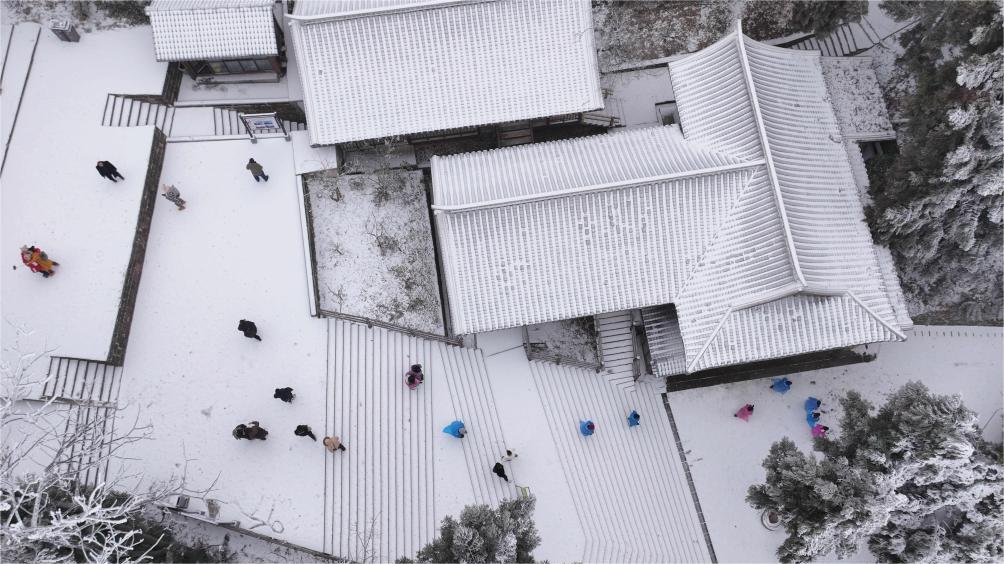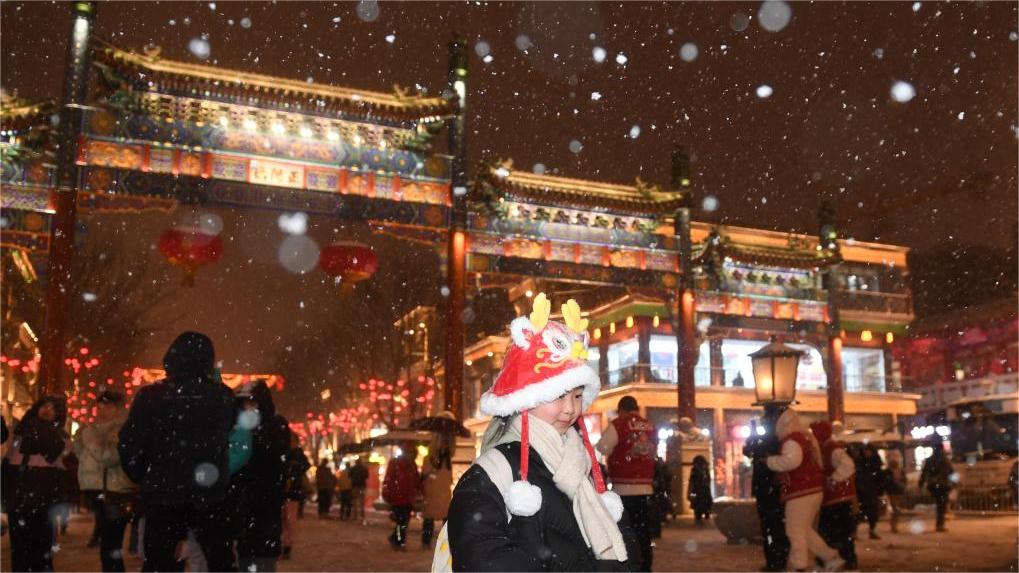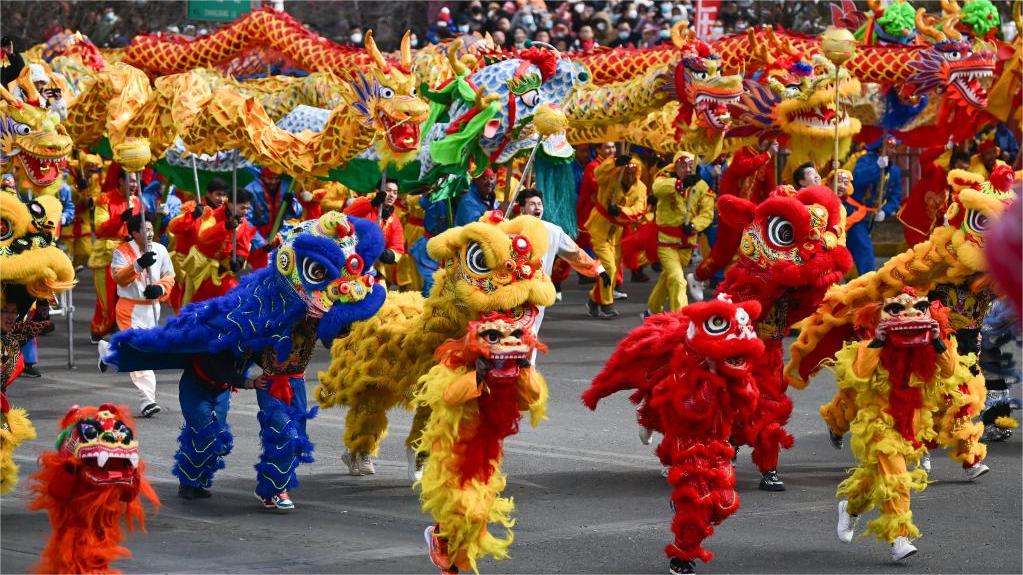Slow trains in Qinling Mountains meander toward joy, prosperity
XI'AN, Feb. 23 (Xinhua) -- During the just-concluded Spring Festival holiday, or the Chinese Lunar New Year holiday, tourists from across the country flocked to northeast China's "ice city" of Harbin to enjoy the fun of ice and snow activities.
Meanwhile, in northwest China's Shaanxi Province, some citizens opted to take slow trains to the nearby Qinling Mountains, to enjoy the snow-covered scenery there.
Zhang Xiaomin, from the city of Baoji, Shaanxi, is among them. She took the No. 6063 train from the Baoji station last Wednesday together with her friends, heading for the Qinling Mountains.
"After seeing the romantic snow videos on Xiaohongshu (China's lifestyle-focused social media platform), I was full of yearning for this trip," said Zhang, adding that the train ticket was reasonably priced, at just 7 yuan (about 99 U.S. cents).
This winter, the slow trains running deep into the Qinling Mountains saw a rise in popularity among locals and tourists. However, the trains have long served a function beyond leisure trips, providing an important means of transport linking those living in the Qinling Mountains with the outside world.
As a natural boundary between China's northern and southern regions, the Qinling Mountains stretch over 1,600 km from east to west.
In 1958, the Baoji-Chengdu Railway, a railroad line linking Baoji and the city of Chengdu in southwest China's Sichuan Province, was completed and went operational. Since then, the 6063/6064 slow trains have been running on the line. With the highest fare costing 39.5 yuan, the trains cover some 350 km and stop at 32 stations, most of which are stops nestled in the Qinling Mountains.
Xiang Baolin, 59, is the chief conductor of the No. 6063 slow train, and has worked on the train for more than 20 years. He said that although the train's maximum speed is no more than 80 km per hour, it is still the first choice for local residents because it is cheap.
The train is not just a mode of transportation for locals, but also a "mobile bazaar." Locals are encouraged to bring their farm products on board and trade goods while commuting.
To facilitate their trading, some seats of the train have been removed, and posters containing the information on the supply and demand of agricultural products have been posted on the bulletin board.
Zhao Mingying, a villager from Yanzibian Township of Shaanxi's city of Hanzhong, said that selling agricultural products once troubled him. He had to leave home before daybreak, trekking along the mountain roads and then riding a motorbike.
"Thanks to the slow train, I can easily leave the mountain to sell the agricultural produce. And with a bit of luck, almost half of the products can be sold on board," Zhao added.
Moreover, the train also acts as a school bus for children, as it goes through 19 primary and high schools.
"In 2017, we remodeled the tables in No. 6 carriage and made it a mobile library for the children. Our colleagues also teach them painting and calligraphy for free," said Xiang, adding that many of the students have been admitted to universities.
Xiang has witnessed the changes of the train over the years. "In the past, we had to burn coal for heating in winter," he said. "However, the train was equipped with air conditioners in 2022."
"I will retire next year," said Xiang. "I hope that the slow train will carry more villagers in remote mountain areas, leading them toward a better life."
Photos
Related Stories
Copyright © 2024 People's Daily Online. All Rights Reserved.









